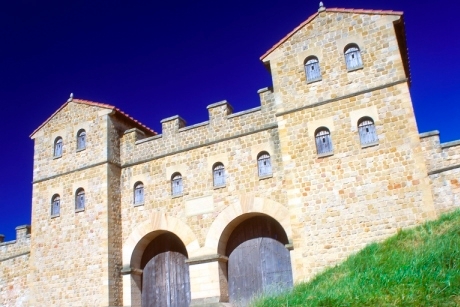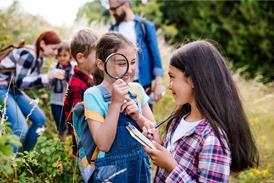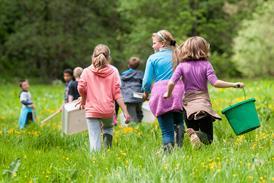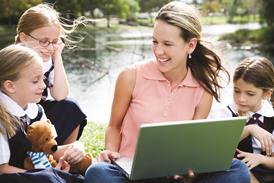
Students from Hadrian Primary School in Tyne and Wear recently swapped their usual classroom learning space for a museum – for a whole term. Here’s how they got on.
What would happen if a class of Primary school children swapped their classroom for a museum for a term?
That’s the premise of the My Primary School Is At The Museum initiative, which has been created by King’s College London as part of its Cultural Space Programme.
Three Primary schools were selected to take part in the project at the start of this year. The aim was to research new ways of delivering education.
Hadrian Primary in Tyne and Wear was one of the participating schools. We spoke to Year 5 teacher Stephanie Christie to find out what happened.
Stephanie took her students to Arbeia Roman Fort and Museum, and the class studied there for the entire spring term.
Arbeia is a site covered in the remains of a large Roman fort with reconstructed gatehouse and living quarters, plus a small museum. The building used to guard the main sea route to Hadrian's Wall. It was a key garrison and military supply base to other forts along the wall and is an important part of the history of Roman Britain.
Stephanie explained why she decided to get involved in the project.
“I was hoping to gain the children’s interest and enthusiasm, and I knew that they would take ownership of a second ‘base’. I was also hoping to be creative with my planning and see just how many links can be created from using a different learning space.”
Stephanie explained that some of the Year 5 children had never actually visited Arbeia Roman Fort and Museum before, even though it’s only across the road from their school.
She said: “I wanted to really let the history of our local area spark their interest.”
The lessons the Year 5s experienced incorporated the Arbeia site as much as possible. Lessons were cross-curricular, and the museum and its facilities were used as much as possible.
Stephanie explained that she was able to be very creative with the museum space.
“We were outside a lot, which was very different to our lessons in school. I tried to use the spaces that were available in different subjects, to not only keep the enthusiasm of the children alive, but to also apply knowledge in different contexts.”
The class had access to a variety of objects and displays which supported learning in subjects such as Maths, Art and Literacy.
In Maths, the students went on an ‘Angle Hunt’. They were encouraged to explore the officer’s quarters and find as many angles as they could. Then they had to identify what those angles were.
They also took a Roman Numeral hunt; a treasure hunt for Roman numerals.
Stephanie explained that this linked with Numeracy learning, as well as Literacy. The class was able to create a tour around Arbeia for other children and parents who might visit in future based on information they found in the museum.
The museum was also handy for Art lessons. The class were able to gain knowledge of the local area and link it with other landscapes that they’d studied in Art lessons.
They also used different parts of Arbeia, like the top of the fort, to sketch different viewpoints.
Additionally, in Literacy, the students kept journals whilst completing the project. These journals included sketches, personal writing and an exercise in which pupils pretended to be an archaeologist at the site in order to write a diary entry.
So has the project over all been beneficial?
Stephanie said: “Definitely! The children completely took ownership of the site (they call it their second classroom) and are very keen to return.
“We have planned sessions for each staff member to use the space in Arbeia to extend the learning for all children in the school and hope to keep up this link.
“We are planning a parent workshop where the children are going to give the parents a tour and carry out some of the activities with them that we have done.”
More about My Primary School is at the Museum
The museum project has established partnerships between Primary and nursery schools and museums across the UK: Arbeia Roman Fort and Museum in South Shields; Tate Liverpool; and the National Waterfront Museum in Swansea.
Schools taking part in the project are observed according to learning, social and cultural outcomes.
The families of the students, and the museums, are also observed for positive changes based on these educational sessions.
The project is ongoing until June.









